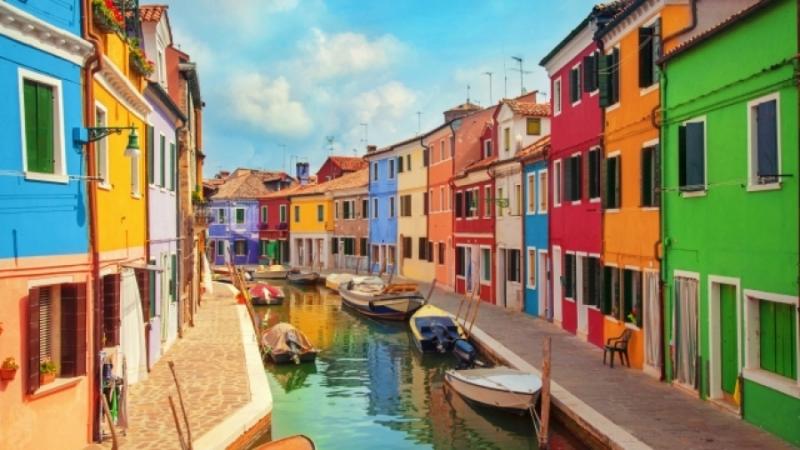 Burano
Burano
The main artery, leading to the village of Burano, it is narrow, street full of lace shops, where, after a short walk, the houses of the village center, painted with vivid colors, appear. Formerly, these colors had a symbolic meaning, but with time the symbolism was blurred and today the inhabitants paint their houses guided only by their own taste and imagination.
It is still a fishing village. Various types of shellfish are caught in the lagoon, e.g.. clams (tiny clams) in crab, which can then be bought either on the island itself (at the Fondamenta Pescheria), or on the Rialto. Because fishing is an activity for loners, on a slightly higher section of the swampy coast, a few residents built rather uncertain huts from materials found in rubbish dumps.
Mainly men live in Burano from the sea, while women are engaged in lace making. The block lace making technique used on Burano and Venice is extremely time-consuming and tiring work for the eyes., requiring great skill and patience. Because each woman specializes in only one pattern, all laces pass through the hands of many lace makers during their production. The necessary skills are taught in the spacious Piazza Baldessare Galuppi Scuola dei Merletti (lace school; Wed-Mon. 9.00-18.00; 2000L), which opened in a year 1872, when the tradition of home craftsmanship was almost dying out. The school is connected with the museum, worth visiting, before you buy any lace (most of those on display are machine-produced and imported). The museum has lace from the 16th century, but most come from the last 100 years.
Torcello
The first settlement on Torcello was established in the early. 5th century, for a year 638 it was already the seat of the Altinum bishopric, and in the fourteenth century it was inhabited by approx. 20 thousand. people. Later, however, it was influenced by Venice and already in a year 1600 it was almost abandoned. Today, the number of permanent inhabitants of the island is approx 100, and there is not much left of Torcello's peak development; two churches, two buildings on the main square and half-buried clay shells in the fields.
The main monument, which attracts tourists to the island, is the first Venetian cathedral of Santa Maria Assunta (daily in the summer. 10.00-12.30 i 14.00-18.30, in winter until 16.30). The first church on this site became a cathedral after the arrival of Bishop Altinum along with a group of immigrants to the island. The present church is in the Venetian-Byzantine style, but it is based more or less on the same plan, what a temple from the 7th century (despite the expansion from the sixties and the ninth century and changes from the year 1008). The only remnant of the original building is a damp crypt inside. The baptistery is from the 7th century, but only its round base has been preserved.
Green gray, the watery marble color of the columns and walls sets the tone for the interior design. The mosaics on the floor come from the 11th century, but after lifting two wooden flaps, fragments of the original floor can be seen. The apse is decorated with a magnificent 12th-century mosaic of Madonna and Child on a pure gold background, and below it is an 11th-century frieze with figures of the apostles. In the central part of the frieze, the figure of the first bishop of Altinum is visible, st. Heliodora, whose body was brought here by the first settlers. It is interesting to compare his face with the golden death mask, which, along with his remains, is located in a Roman sarcophagus, placed in front of the original altar from the 7th century.
Church of Santa Fosca (te same godz. opening) it was built in the 11th and 12th centuries as the sanctuary of this saint, whose body had been brought to Torcello from Libya a year ago 1011 and placed under the altar. Despite repeated renovation works, the church has kept the plan of the Greek cross and is beautiful (especially from the outside) the apse, and inside, elegant brick arches and curves lead to the wooden dome. Despite the presence of tourists, both churches retained an atmosphere of solemnity and thoughtfulness, which many churches in Venice lack.
In the square in front of Santa Fosca stands the mysterious Attila chair. According to local legend, who will sit on it, will be married within a year. Behind it is worth a visit, well organized Museo delTEstuario (wt.-nd. 10.00-12.30 i 14.00-17.30; 2000L), in which there are 13th-century wrought gold figures, a collection of mosaic heads and jewelry.